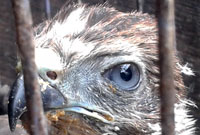Posted on 17:59 April 13th, 2016
Today (Wednesday, 13th of April 2016) Scorpion Foundation reported to the Government Natural Resources
Conservation Agency (BKSDA) in Aceh province of Indonesia regarding its finding
of protected species on sale openly in Bireuen wildlife market, Bireuen
Regency.
The protected animals
include slow loris, and falcons, found by Scorpion Foundation on Tuesday (12th of April 2016). The slow loris was on sale at the price IDR 150,000
(GBP7.5) while the falcons were on sale at the price IDR200,000 (GBP10)/bird.
Wikipedia on slow loris: Slow lorises are a group of several species of nocturnal
strepsirrhine primates which make up the genus Nycticebus. Found in Southeast
Asia and bordering areas, they range from Bangladesh and Northeast India in the
west to the Sulu Archipelago in the Philippines in the east, and from Yunnan
province in China in the north to the island of Java in the south. Although
many previous classifications recognized as few as a single all-inclusive
species, there are now at least eight that are considered valid: the Sunda slow
loris (N. coucang), Bengal slow loris
(N. bengalensis), pygmy slow loris (N. pygmaeus), Javan slow loris (N. javanicus), Philippine slow loris (N. menagensis), Bangka slow loris (N. bancanus), Bornean slow loris (N. borneanus), and Kayan River slow
loris (N. kayan). The group's closest
relatives are the slender lorises of southern India and Sri Lanka. Their next
closest relatives are the African lorisids, the pottos, false pottos, and
angwantibos. They are less closely related to the remaining lorisoids (the
various types of galago), and more distantly to the lemurs of Madagascar. Their
evolutionary history is uncertain since their fossil record is patchy and
molecular clock studies have given inconsistent results.
Wikipedia on Falcons: A falcon (/ˈfɔːlkən, ˈfæl-/) is any one of 37 species of raptors
in the genus Falco, widely distributed on all continents of the world except
Antarctica.
Adult falcons have thin,
tapered wings, which enable them to fly at high speed and to change direction
rapidly. Fledgling falcons, in their first year of flying, have longer flight
feathers, which make their configuration more like that of a general-purpose bird
such as a broadwing. This makes it easier to fly while learning the exceptional
skills required to be effective hunters as adults.
The falcons are the
largest genus in the Falconinae subfamily of Falconidae, which itself also
includes another subfamily comprising caracaras and a few other species. All
these birds kill with their beaks, using a "tooth" on the side of
their beaks — unlike the hawks, eagles, and other birds of prey in
Accipitridae, which use their feet.
The largest falcon is
the gyrfalcon at up to 65cm in length. The smallest falcons are the kestrels,
of which the Seychelles kestrel measures just 25cm. As with hawks and owls,
falcons exhibit reverse sexual dimorphism, with the females typically larger
than the males, thus allowing a wider range of prey species.
Some small falcons with
long, narrow wings are called "hobbies", and some which hover while
hunting are called "kestrels".
As is the case with many
birds of prey, falcons have exceptional powers of vision; the visual acuity of
one species has been measured at 2.6 times that of a normal human. Peregrine
falcons have been recorded diving at speeds of 200 miles per hour (320 km/h),
making them the fastest-moving creatures on Earth.
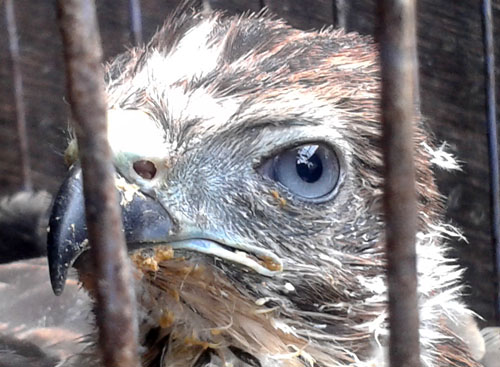
Falcon on sale in Bireuen wildlife market. Price IDR200,000 (GBP10).
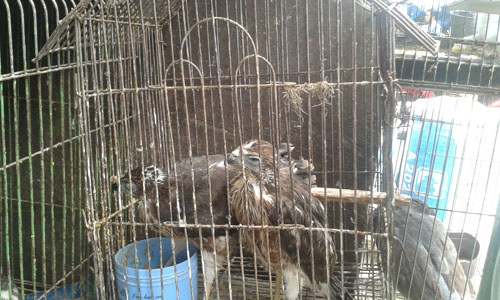
These falcons looks unhealthy. (Photo: Scorpion)
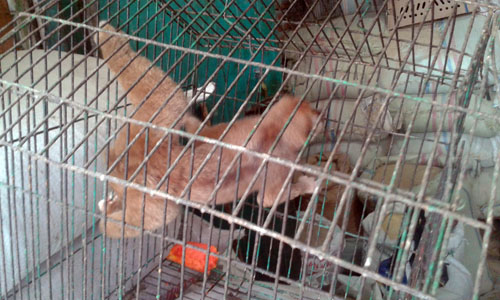
Slow loris IDR150,000 (GBP7.5)/individual. (Photo: Scorpion)
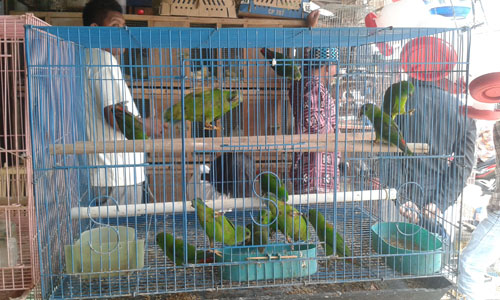
Other birds on sale in Bireuen market. (Photo: Scorpion)
